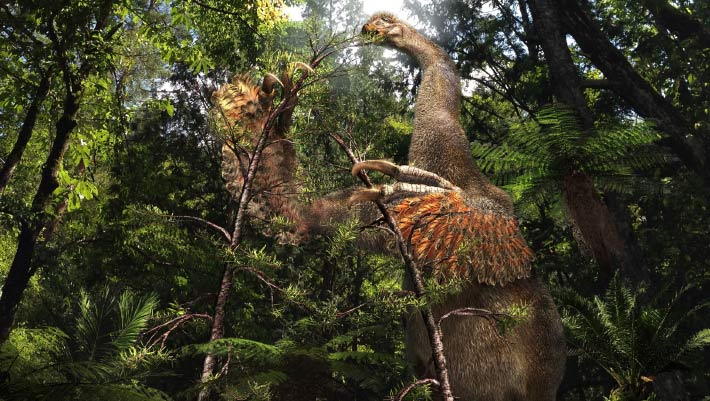Paleontologists have unearthed the fossilized remains of a new and unusual therizinosaurid dinosaur with atypical hands in Mongolia.
Duonychus tsogtbaatari lived in what is now Mongolia during the Late Cretaceous epoch, between 95 and 90 million years ago.
The new species belongs to Therizinosauria, a group of herbivorous or omnivorous theropod dinosaurs that lived in Asia and North America during the Cretaceous.
“Therizinosauria is a clade of unusual herbivorous or omnivorous theropod dinosaurs known from Cretaceous deposits of Asia and North America,” Hokkaido University Museum vertebrate paleontologist Yoshitsugu Kobayashi and his colleagues wrote in their paper.
“This clade is most recognizable for their tridactyl (three-fingered) hands sporting three large claw-like unguals, as exemplified by the large-bodied Therizinosaurus from the latest Cretaceous of Mongolia.”
“More primitive members of the clade like Falcarius, Beipiaosaurus, and Jianchangosaurus had relatively smaller unguals compared to more derived forms, such as Erliansaurus, Nothronychus, and especially Therizinosaurus.”
“As herbivorous or omnivorous theropods with long necks and small leaf-shaped teeth, the evolution of their unusual hands likely played an important role in the feeding ecology of this clade.”
According to the paleontologists, Duonychus tsogtbaatari is a medium-sized therizinosaur, with an estimated body mass of approximately 260 kg.
The fossils of this dinosaur were recovered from the Urlibe Khudak locality of the Bayanshiree Formation in the Gobi Desert, Ömnögovi province, southeastern Mongolia.
“The specimen consists of a partial skeleton, including: six articulated dorsal vertebrae, six articulated sacral vertebrae with sacral ribs, the anterior-most caudal vertebra, some dorsal ribs, partial left scapula and coracoid, humeri, ulnae, radii, carpals, metacarpals, the left and right manus, the right ilium, both pubes, and the proximal end of the left…
Read the full article here

